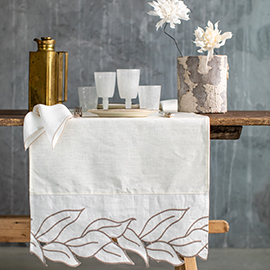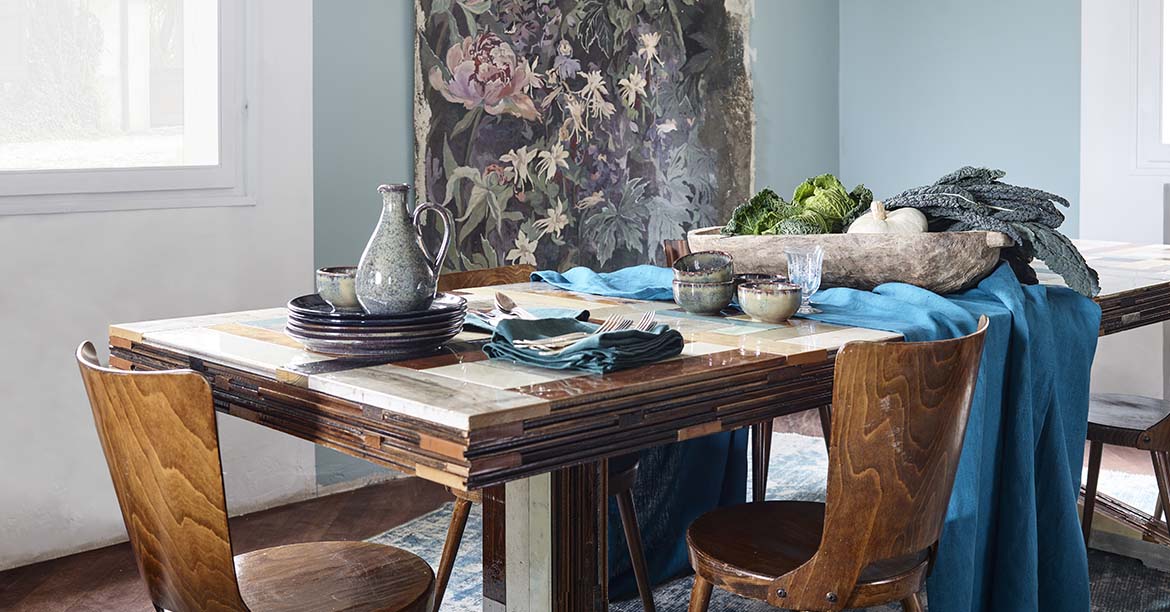
When I started to imagine the decor of our home, guess where I started from? Exactly, from the dining room! I know, for most people it comes later, but for me the room where I can welcome guests and celebrate special occasions is the most important room in the house. The dining room is a place to meet with friends and that is why it must play a central role in the home.Decorating it in the right way helps us enhance the home and create a space designed to host the people we love. In fact, thanks to furniture we can make the difference between an anonymous dining room and a dining room that becomes the heart of the home, changing function during different times of the day. For me, I see it as a flexible space, which instead of just being a setting for our gatherings, can become a living room, a place to relax that we can transform by adjusting the lights and inserting the right elements, such as a sofa and a bar cabinet, for example. Of course, choosing the right furniture confronts us with many choices, such as style, aiming for a more formal atmosphere, for example, but also the distribution of space and the many elements we can use in even a small space. That's why I decided to give you some tips on how to create a dining room that can become a cozy space for everyone and some style ideas to inspire you, let's see them together.
Create a floor plan to design the dining room.
You can choose to have the living room coexist with the dining area, or you can decide to keep the two rooms separate and dedicate an actual room to the dining room At one time in more classic houses the rooms were strictly separated, while today due also to the smaller size of houses there is a tendency to make dining and living room or dining and kitchen coexist, creating what is called an eat-in kitchen Before thinking and arranging, we definitely need to take measurements: in order to decide on the location of the furniture, we need to know the space we have well, whether we are furnishing a room from scratch, or when we just need to freshen up. After measuring the room carefully we can prepare a floor plan of the room, taking into account the position of windows, corners and the exposure of the room. This is something I do on my own, having fun then thinking of a thousand different solutions, but if you are not very familiar you can turn to a professional, such as an interior designer. In this case you will also have the opportunity to see a 3D version of your design, doing very realistic tests of the result and with a good view on spaces and ideas for creating transition areas. Today's decorating trends seek to introduce large movement spaces and furniture of significant proportions into homes, and for the dining room in particular, we have seen a gradual increase in average table sizes.
Respect balance and proportion.
This is a rule that always applies when it comes to furnishing the home, but even more so in a functional and often element-rich room such as the dining room. Respecting the proportions of a room means creating harmony among the elements, avoiding the effect of being too full but also its opposite. Very important then to be balanced, trying to best distribute the furniture on the different walls, leaving no bare spots and others overloaded. If the effect we want is movement instead, we can play with different sizes and heights, alternating furniture and lamps of different sizes, such as an important floor lamp juxtaposed with a pendant lamp: I always use this trick when decorating and I assure you that it works wonders!
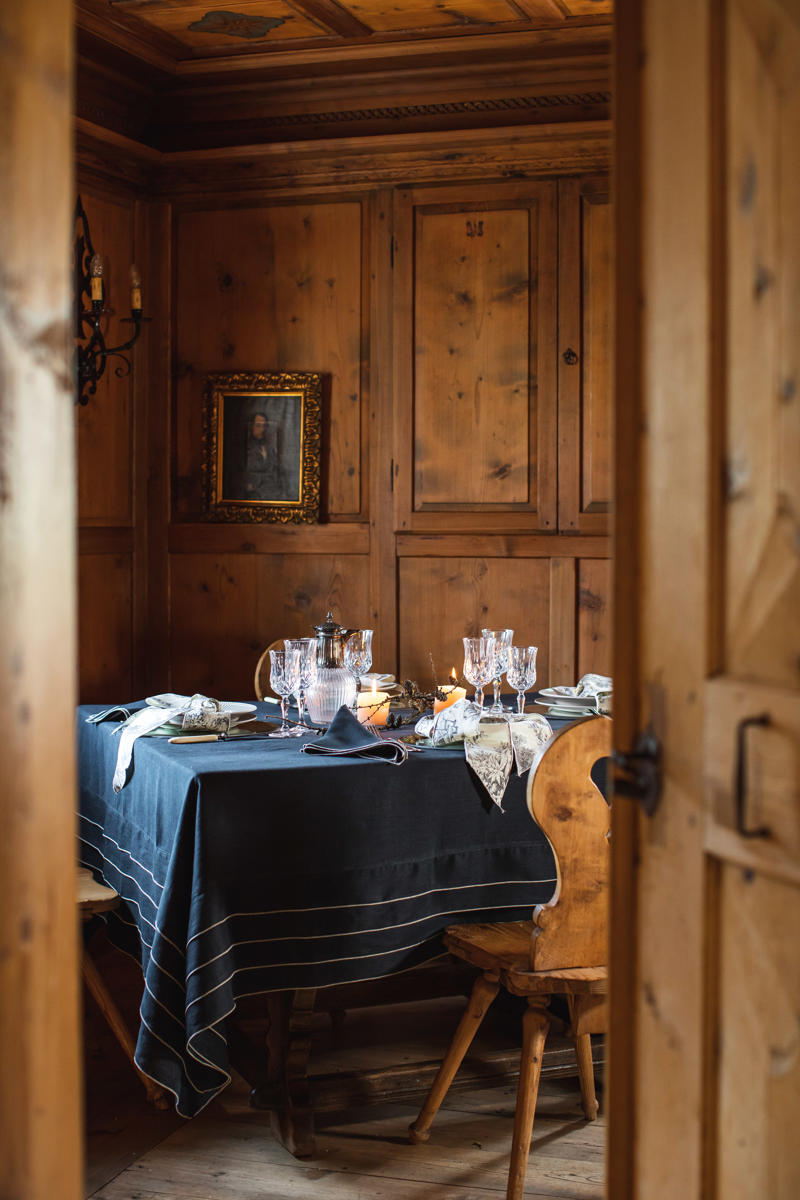 |
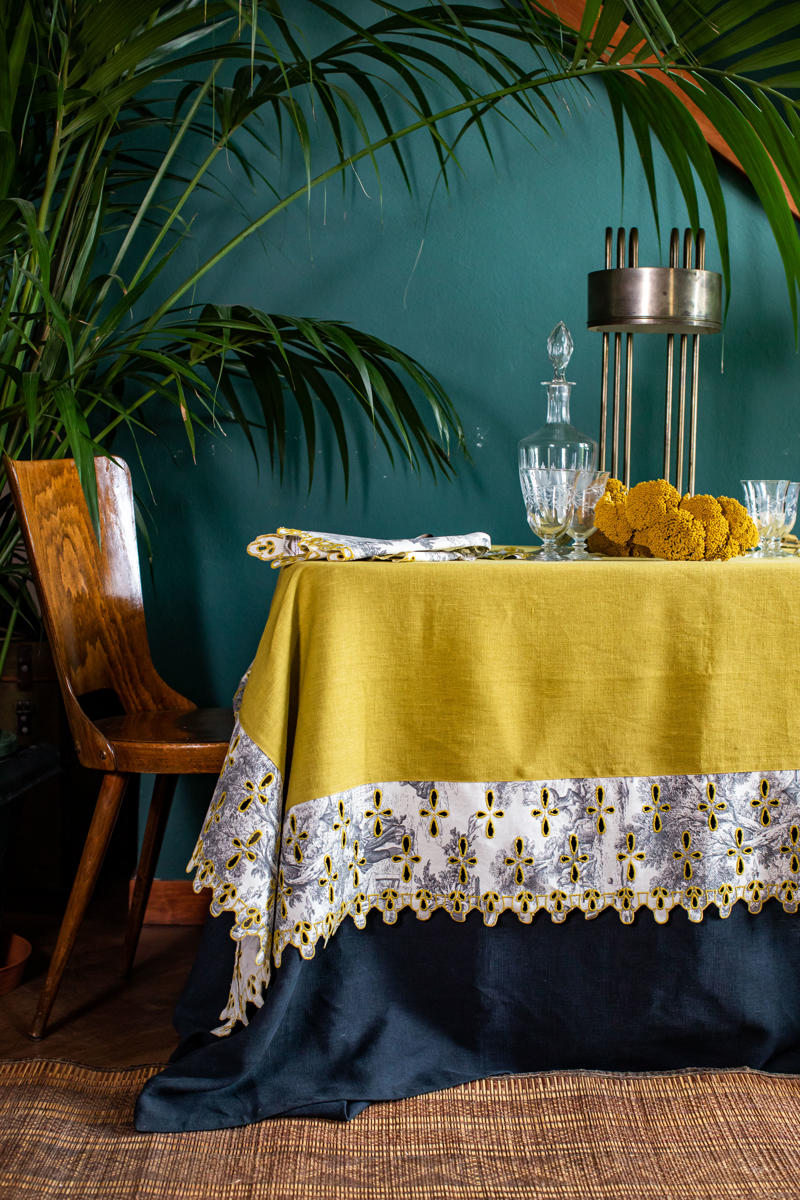 |
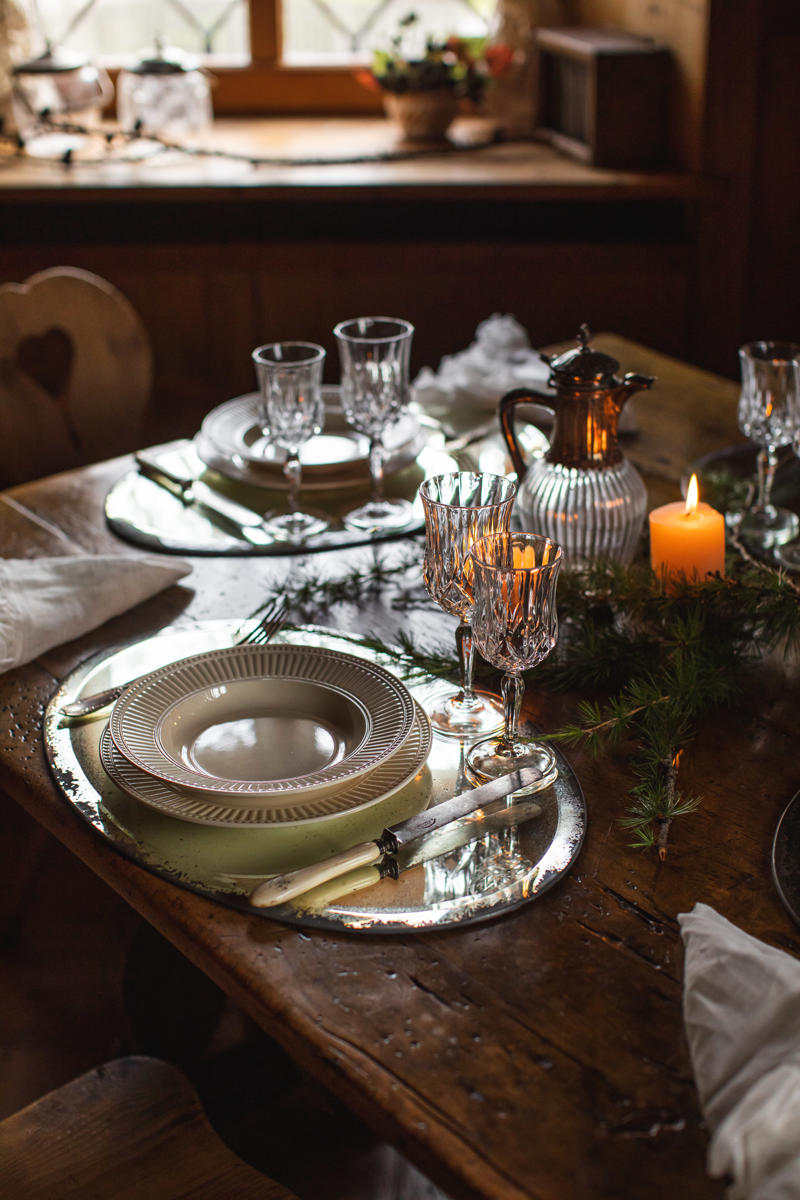 |
Making the most of space
Space is an issue for everyone: for those who have a small house and want to avoid a claustrophobic effect, but also in the case of those who have a large house that needs to be made the most of. Always keep in mind that the dining room is a room where everyone should feel welcome and relaxed, with no narrow and uncomfortable passages and with a central element, the table, that should always be enhanced. The perfect location for the table in a bright, air-filled spot, such as near a window or glass door,so that everyone can enjoy the sunlight coming in. Natural light is very important, so we avoid placing furniture in a way that prevents it from entering, such as near doors and windows. The question of light is very important because this is a room where you often receive guests in the evening and therefore with the use of artificial lights: it is therefore good to create different light sources to be used together or alternately. For a dinner party, in fact, it is more pleasant to have a light focused on the table that perhaps leaves the surroundings more in semi-darkness. Better, therefore, are lamps that cast a downward beam rather than those that illuminate the whole room Similarly, I always try to leave a transition area around the table, so that you have at least sixty inches in which everyone can move around without discomfort. If you have only one room to be used at the same time as a living room and dining room this advice is even more important, having to manage to make the sofa and table fit in harmony, in a small space. In this case a good solution is to choose an extendable table, which you can adapt to different situations: fully open when you have guests, closed at other times. I also love more eclectic solutions, such as storage furniture to be used as seating, which allow you to recover space in an original way, but this also depends on the style you choose.
What style to choose for the dining room
It is always nice to design spaces but the most satisfying part, in my opinion, is when we choose what our dining room will look like. Consistency is very important and the mistake we should avoid is mixing too many styles, which creates a confusing effect, giving the impression that we have juxtaposed random materials and elements. The first thing to do, therefore, is to choose a style that fits with the rest of the house and then go on to customize it while still maintaining a guiding line. Among my favorites for the dining room are four styles that I will now tell you about in detail: maximalist, minimalist, classic, and modern.
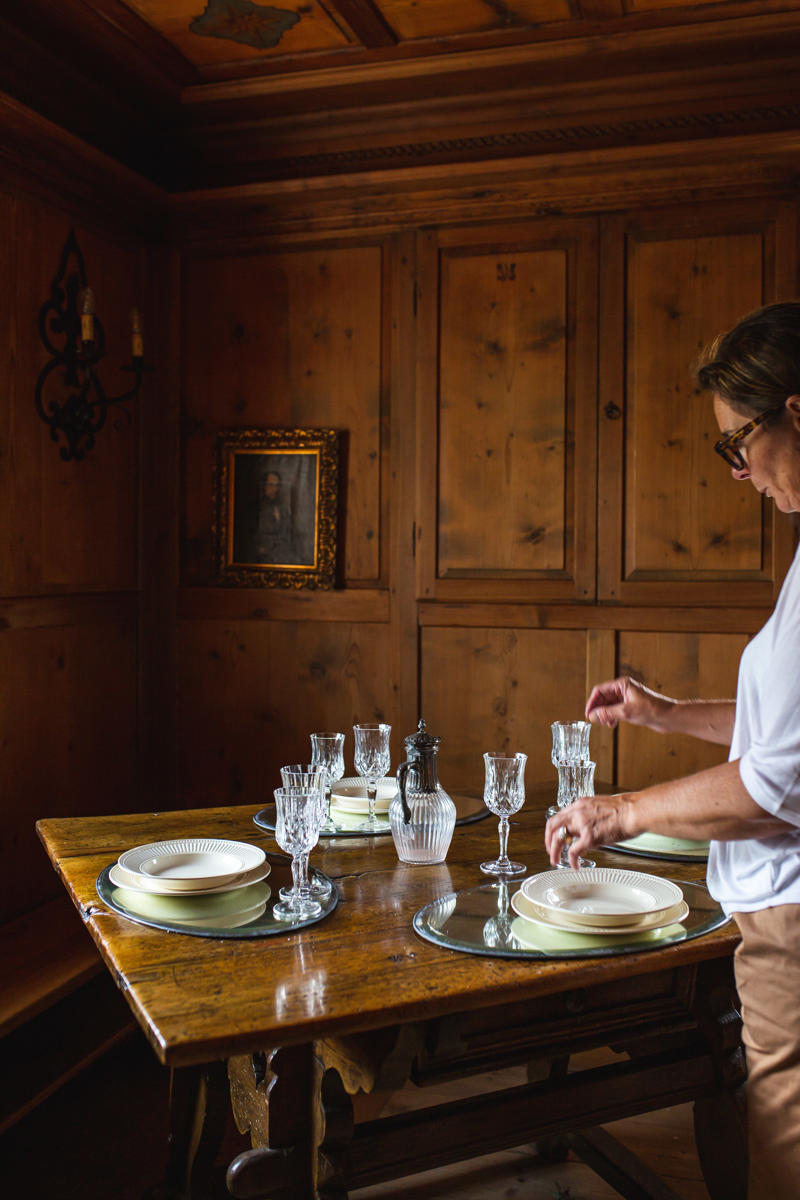 |
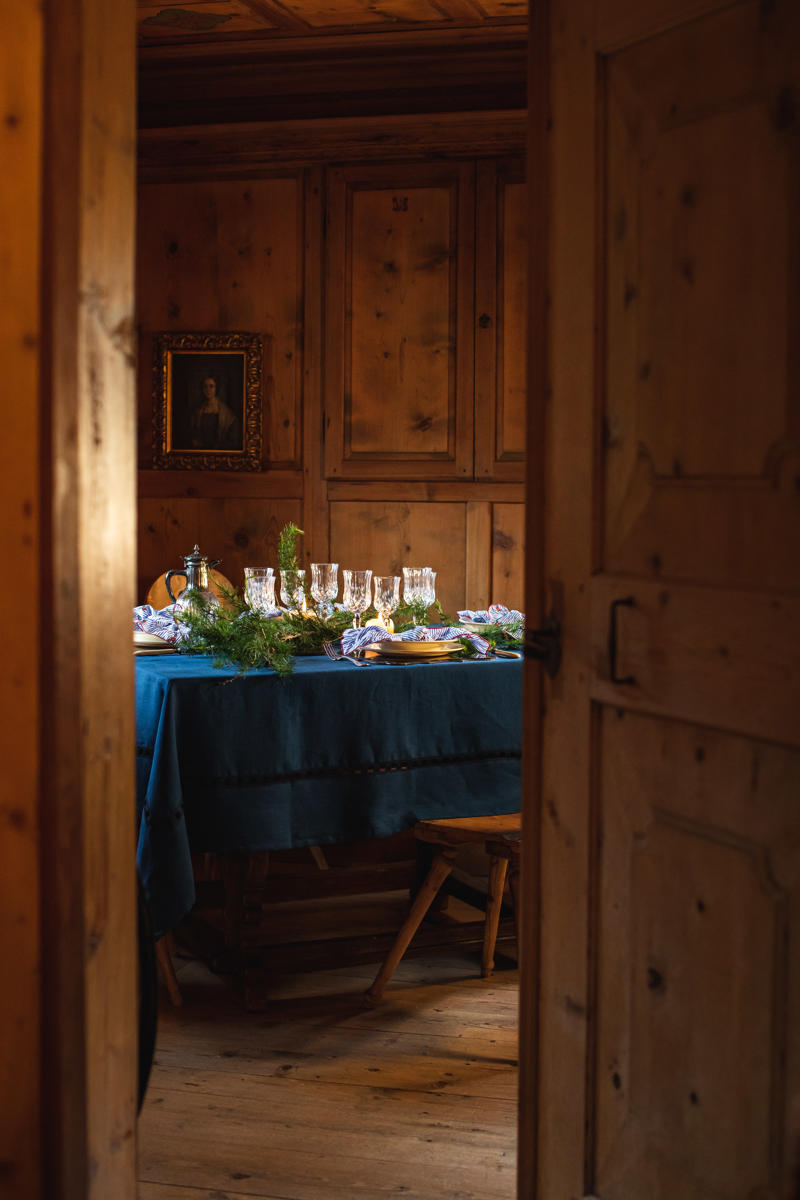 |
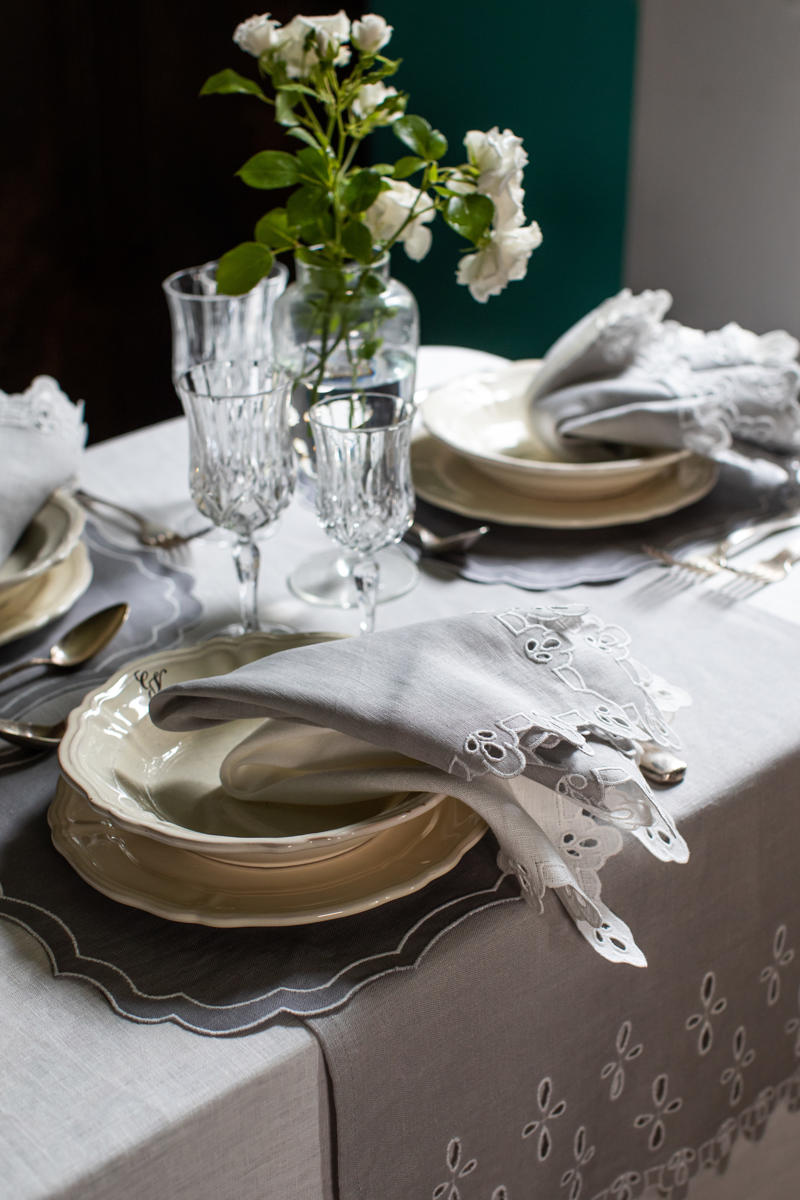 |
Shabby Chic
The shabby chic style was born in the 1980s, thanks to the idea of Rachel Ashwell, a British designer who was able to create a unique aesthetic from salvaged elements and used furniture. Her goal was to create a warm and welcoming environment that was both elegant and refined. The secret of this style is the combination of REAL and new vintage elements, which create a balance between past and present. and a choice of delicate colors, with pastel tones. The watchword for the Shabby chic style is mismatched! That is, the effect of an object considered useless because it is out of place, or a bit passé, if well combined with others with a precise logic, creates a very pleasant harmony. A home in this style comes from the accumulation created with time and research of details, fabrics, and objects from travels, flea markets, or handed down from hand to hand for generations in the family. It is thus a kind of very personal diary of the history of the person who lives in it. For this reason, a house defined in this style but assembled without authenticity runs the risk of looking terribly fake and uninteresting. To achieve a perfect shabby chic effect, the balance between the different elements and the choice of furniture pieces, fabrics and every detail are fundamental and delicate . If you choose a shabby chic dining room, you will have a vintage and romantic look with a touch of eclectic decadence. To furnish it in this style, you can use old and worn wooden furniture, accompanied by soft and light fabrics such as cotton or muslin. Raw linen tablecloths, emphasizing the softness of washed and air-dried linen and natural colors, are perfect for creating a warm and cozy atmosphere. To complete the decor, you can use white ceramic and dark wood furnishings, perhaps reclaimed, to create an even more dreamy atmosphere. Perfect then to set the table with antique plates and cutlery, even uneven, but tie you for example by a common thread such as color or a decorative motif! Also for the walls, prefer pastel tones or lime colors and then complete by hanging collections of antique ceramics, oil paintings, still life or landscapes. As I told you here details and balance, make the successful or not…
Kinfolk
Close to the shabby chic style but with a more purist and contemporary aesthetic is the kinfolk style. I became acquainted with this mood during a trip to the United States, in which I stayed at an Amish community; in fact, it is from the Amish and their very particular way of life that the style of decorating their homes derives. Here the watchword is simplicity and the choice of natural materials of great quality, is associated with an extreme minimalism. Each piece of furniture is completely handcrafted with archaic tools and where the fact that they have left no room for decoration has resulted in a style that is in fact extremely elegant, precisely because it is pure, simple, useful and made only of great quality. This pure elegance meant that the Kinfolk style quickly spread to North America and then to Europe, and is now adopted by those seeking authenticity of materials and to warm, simple atmospheres. If you want a kinfolk-style dining room, prefer solid wood furniture with elegant and light lines, natural fabrics and especially pigment-free colors, so play only on the neutral tones offered by the raw fibers of linen or hemp, complemented with carved wood or raw ceramic accessories. This style is perfect in the countryside, but provided that the rest of the house is also furnished with the same taste for simplicity and rurality.
Provençal
I have Provençal roots and the style of this particular region of France, brings me back to familiar, elegant and warm atmospheres. Floral motifs, light fabrics and warm colors, combine them and there you have the perfect romantic dining room. Did you know that it originated in the 1700s? At that time, Provence was a very productive agricultural area rich in flowers, and its inhabitants began to decorate their homes with elements inspired by nature and agriculture. Over time, this style evolved and acquired a more refined and sophisticated aesthetic, but remained true to its rural roots. Authentic Provencal style blends elegance and authenticity of materials, fineness of colors and beauty of materials, combined with the simplicity of objects that are useful and enduring or the legacy of long manual labor related to traditions. Being an agricultural reality, great use is made of natural materials, such as linen, hemp, stone, wood, and terracotta, all with craftsmanship but finished in a delicate and elegant way. This is why our linen collections fit so well with this romantic style made of quality details and maniacal care for the quality of raw materials To furnish your dining room in this style, choose natural colors, such as yellow, green and blue. Authentic Provençal furniture has a distinctive style with a lightness on the one hand and a prissy attention to detail on the other. The legs of tables and chairs are curved and carved and the seats often stuffed. The furniture is painted with patinas in dusty talcum colors. There is much use of intermediate colors between grays, greens, and blues, such as Sage, Cerulean, Lavender, Ottanium, and all shades of Grays. Provençal handcrafted fabrics are often cottons or linens with small floral patterns, combined with stripes, Vichy checks, pastoral scenes such as toile de jouy or cashmere designs used for tablecloths and curtains, perfect for creating a cozy atmosphere. To give an extra touch I recommend rustic ceramics of mirrors with decorated frames to create a relaxing and comfortable atmosphere.
Classic
If you want to recreate the reassuring atmospheres of a family home, you can opt for the timeless elegance of classic: to furnish the dining room in this style, use solid wood furniture, accompanied by fabrics such as linen or cotton flanders, velvet. S choose bold colors that go well with the warm tones of wood, such as deep green, dark red, burgundy or cream, to be contrasted with linen fabrics, choosing, for example, a tablecloth with an important pattern, such as a brocade or flander then give your tables a light touch with flatware and small silverware accessories. If you are passionate about research, beautiful pieces can be found at antique markets. To add a personal touch to dress the walls with elegant wallpapers, the market today offers an incredible variety of motifs, from stripes to art deco to William Morris motifs to frescoes that take the guest's eyes on a journey into enchanted landscapes of countryside and woods. Complement them if you wish with classic paintings, with themes of dogs, horses or elegant portraits, perhaps framed in a more contemporary way such as with wood or iron.Also perfect are antique ceramics used to decorate the walls and create a cozy atmosphere.
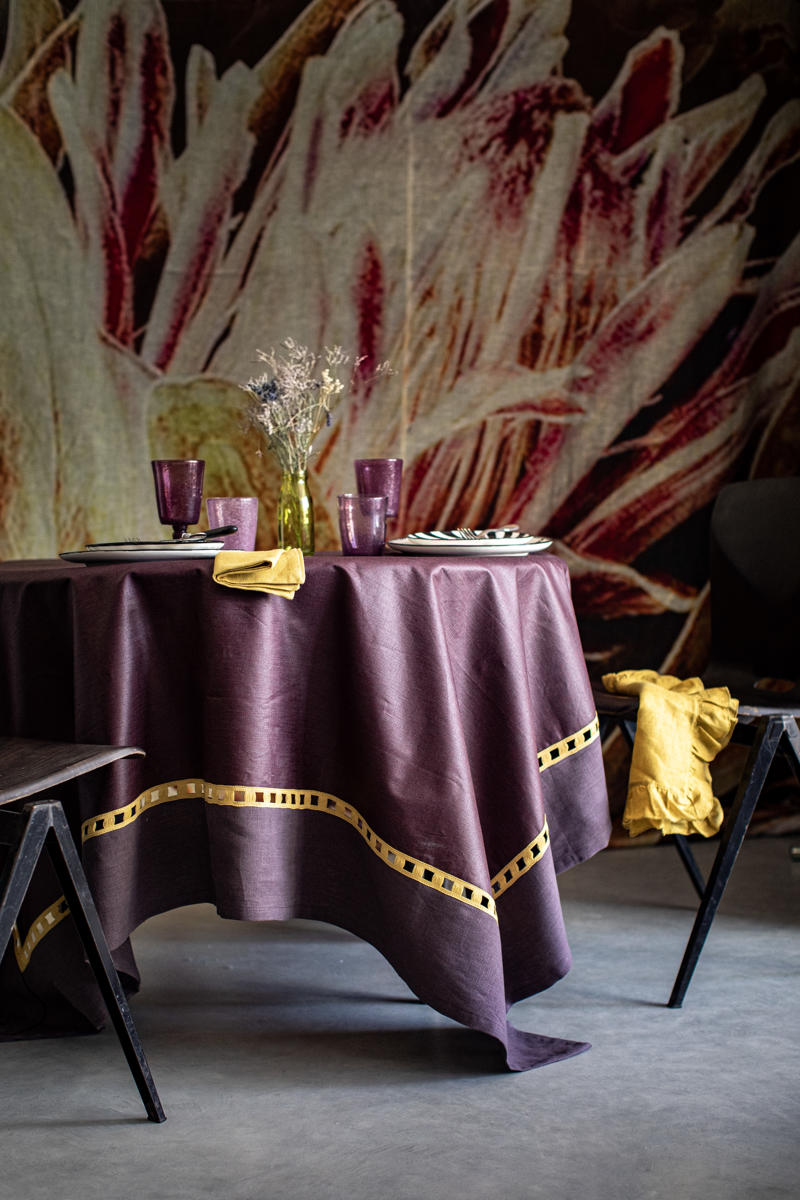 |
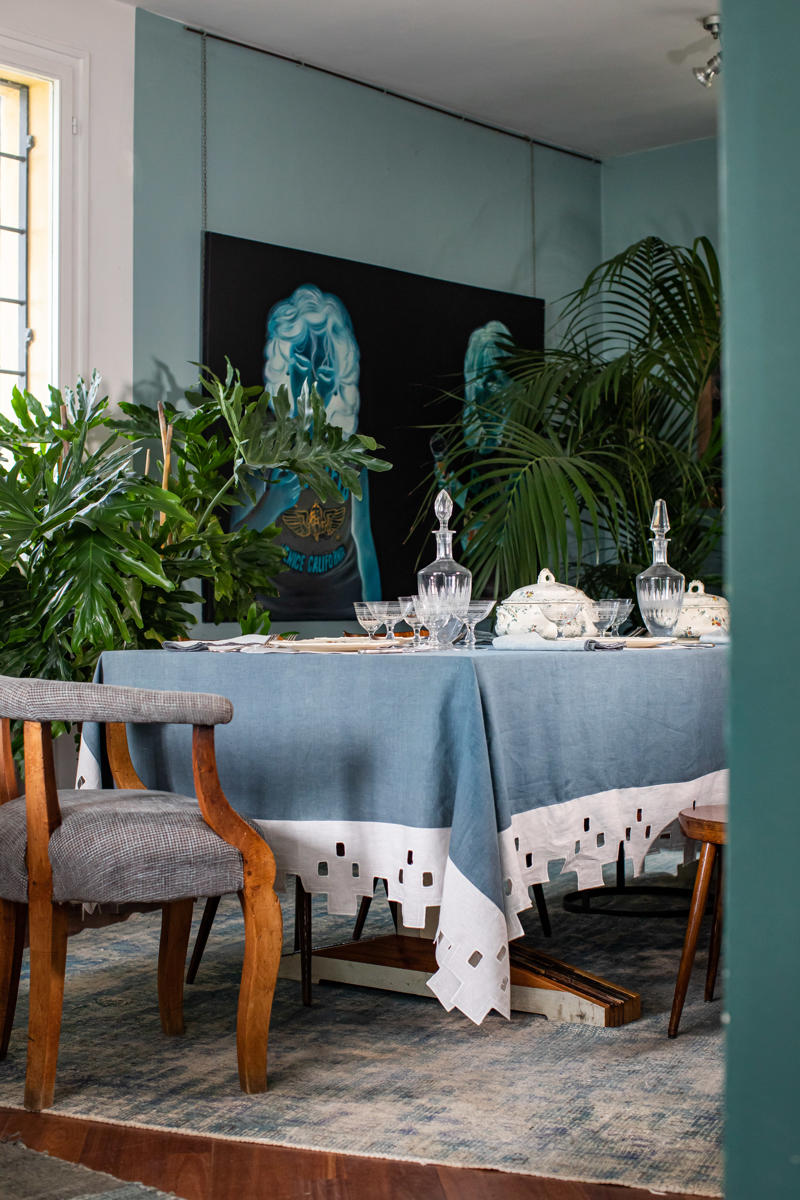 |
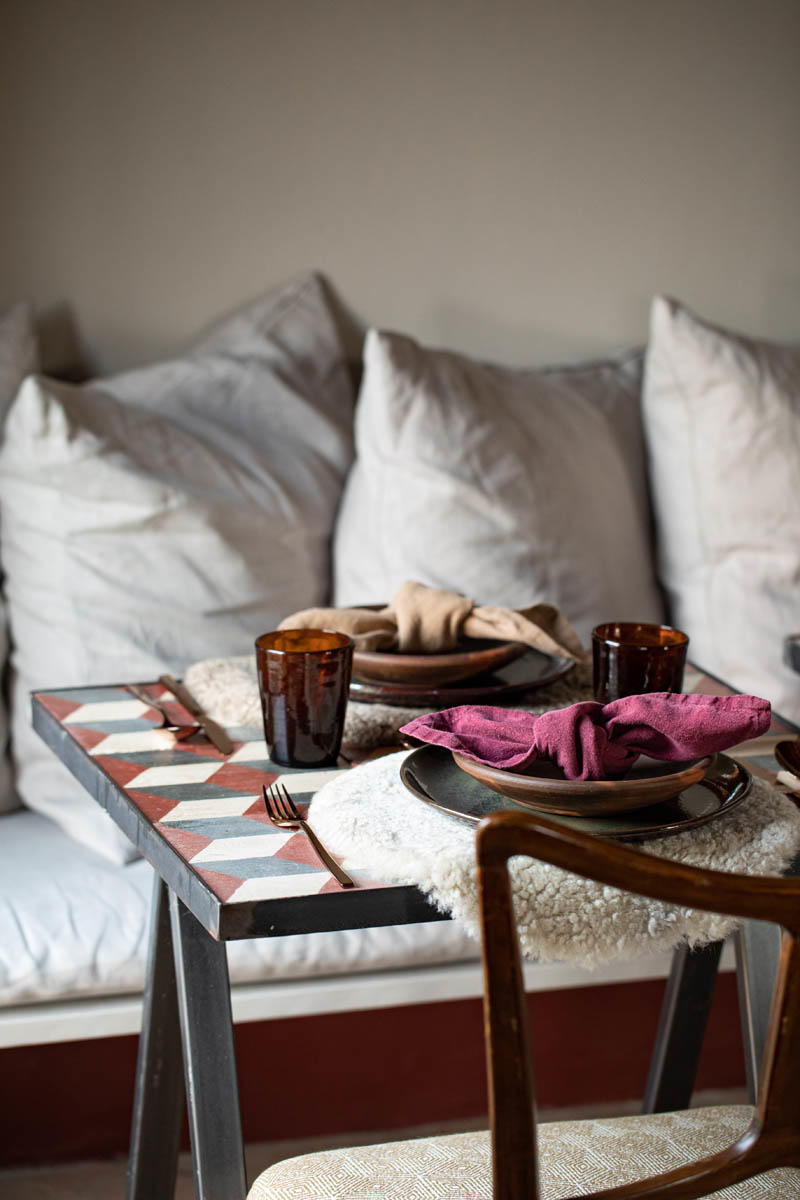 |
Modern
Modern style is characterized by the use of furniture and accessories with a modern design. Colors are often neutral and primary, such as black and white, or combined with color dots. The use of materials that are innovative or improved by new technologies, such as steel, glass, and resins, often take the place of simple wood, and offer striking textures and surfaces Modern style tends to minimize visual impact in favor instead of creating a functional and clean space. Within the modern style, we can then find designer furniture and objects, that is, characterized by particularly innovative lines. For this style of home, often the dining room is integrated into the kitchen or living area, tablecloths and table accessories will favor pure colors, natural materials such as linen or color, and solid colors or geometric patterns. For plates and glasses, porcelain, stoneware, steel for flatware and cleaner glass lines for stemware and glasses are perfect. Minimalist tablecloths, in white or black fabrics, are perfect for creating a sophisticated allure. Vintage 1960s and 1970s lamps of great Italian design and colors such as black and white go well with this style, to which you can add bright notes, using orange for example.
Industrial
The strength of some workbenches, stools or workshop benches, lamps and heavy iron tables, creates a nice contrast to the city vibe of a contemporary apartment, especially if you can highlight the contrasts, for example between the peeling paint of your furniture and your surroundings. Mix-ups and a bit of eclecticism are fine, but be careful not to make a mess by combining too many extravagant elements. Rather, the industrial style, in order to look authentic and elegant, relies on essentiality and a few well-thought-out contrasting accents! Once you have chosen the style, you just have to enjoy the result of your work, inviting family and friends for many unforgettable lunches and evenings!!!: If you want some advice on how to set the table for an elegant dinner party, here you can find what you need!
